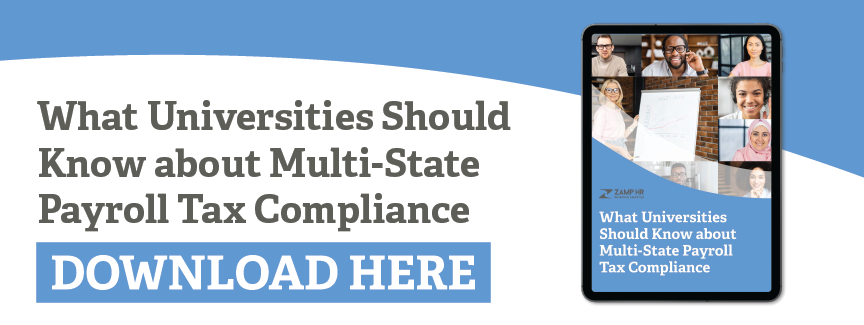In today's rapidly evolving workforce landscape, staying compliant with employment law is more crucial than ever for businesses of all sizes. The advent of remote work, the burgeoning gig economy, and groundbreaking technological advancements have presented both new challenges and opportunities for employers navigating the intricate maze of legal requirements. These shifts underscore the vital importance for businesses to not only keep abreast of the laws but also to understand their practical application within diverse work environments.
This blog aims to serve as a comprehensive guide, outlining the blueprint for complying with employment laws in the modern workplace. By tackling key issues, offering insights, and providing actionable solutions, we aim to equip you with the knowledge and tools needed to ensure compliance, foster a fair work environment, and ultimately, safeguard the integrity of your business.
Understanding Employment Laws
In the labyrinth of modern employment, understanding the foundational laws is the first step any employer should take. These laws cover a wide range of issues including but not limited to discrimination, wage and hour standards, health and safety regulations, and employee benefits. At their core, these laws are designed to protect employees from unfair treatment, while providing a clear framework for employers to manage their workforce legally and ethically.
The following sections will break down the complexities of these laws, highlighting their relevance in today's work settings and offering insights on how to efficiently implement them within different organizational structures.
Key Areas of Compliance
Hiring Practices
Adhering to fair hiring practices is fundamental. This includes avoiding discrimination based on race, gender, age, religion, disability, or other protected characteristics. Employers must also comply with background check laws, provide equal employment opportunities, and follow proper documentation procedures.
Wage and Hour Laws
Compliance with wage and hour laws is critical to avoid costly penalties and lawsuits. This includes paying employees at least the minimum wage, adhering to overtime pay requirements, properly classifying employees as exempt or non-exempt, and maintaining accurate records of hours worked.
Workplace Safety
Creating a safe work environment is not only a legal obligation but also a moral responsibility. Employers must comply with Occupational Safety and Health Administration (OSHA) standards, provide necessary safety training, and address potential hazards to prevent accidents and injuries.
Employee Benefits
Offering benefits such as healthcare, retirement plans, and paid leave can enhance employee satisfaction and retention. However, employers must ensure compliance with laws such as the Affordable Care Act (ACA), Employee Retirement Income Security Act (ERISA), and Family and Medical Leave Act (FMLA) when providing these benefits.
Discrimination and Harassment Prevention
Employers must have policies and procedures in place to prevent and address discrimination, harassment, and retaliation in the workplace. This includes conducting regular training for employees and supervisors, promptly investigating complaints, and taking appropriate corrective actions.
Data Privacy and Security:
As technology becomes more integral, employers need to secure sensitive employee data and adhere to data privacy laws like GDPR and CCPA. Robust cybersecurity measures are crucial to prevent breaches and safeguard employee privacy.
Best Practices for Compliance
Stay Informed
Keep abreast of changes in employment laws at the federal, state, and local levels. Regularly review and update policies and procedures to ensure compliance with the latest regulations.
Train Employees
Provide comprehensive training to employees on their rights, responsibilities, and the company's policies regarding employment law compliance. Training should cover topics such as harassment prevention, safety protocols, and data privacy.
Maintain Accurate Records
Keep detailed records of employee information, payroll records, training sessions, safety inspections, and any incidents or complaints. Accurate record-keeping is essential for demonstrating compliance and responding to legal inquiries.
Seek Legal Guidance
When in doubt, consult with legal professionals specializing in employment law. They can provide valuable advice, conduct audits, and assist in drafting policies and agreements to ensure compliance and mitigate risks.
Foster a Culture of Compliance
Encourage open communication, transparency, and ethical conduct within the organization. Promote a culture that values diversity, fairness, and respect for all employees' rights.
Navigating the Modern Workforce: A Guide to Employment Law Compliance
Complying with employment law in the modern workplace requires a proactive approach, ongoing education, and a commitment to ethical practices. By understanding key legal requirements, implementing best practices, and seeking appropriate guidance when needed, businesses can navigate the complexities of employment law successfully. Prioritizing compliance not only protects organizations from legal liabilities but also fosters a positive work environment conducive to productivity, growth, and employee satisfaction.
If you need expert assistance in managing HR compliance and navigating employment law complexities, contact Zamp HR today. Our experienced professionals can provide tailored solutions to ensure your business stays compliant and thrives in the ever-changing landscape of the modern workplace. Don't wait until legal issues arise—take proactive steps towards compliance and peace of mind with Zamp HR.

.jpg)

